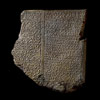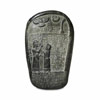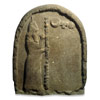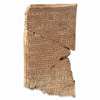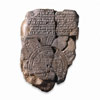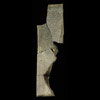
Translation of artifacts provided courtesy
of:
The British Museum 2003
MORE ARTICLES: VIDEO - THE FLOOD TABLET (real player format) Sumerian Culture and the Anunnaki |
Cuneiform tablet with observations of Venus
Neo-Assyrian, 7th century BC
From Nineveh, northern Iraq
Copy of a Babylonian text of 1000 years earlier
Thanks to Assyrian records, the chronology of Mesopotamia is relatively clear back to around 1200 BC. However, before this time dating is less certain. This tablet is one of the most important (and controversial) cuneiform tablets for reconstructing Mesopotamian chronology before around 1400 BC.
The text of the tablet is a copy, made at Nineveh in the seventh century BC, of observations of the planet Venus made in the reign of Ammisaduqa, king of Babylon, about 1000 years earlier. Modern astronomers have used the details of the observations in an attempt to calculate the dates of Ammisaduqa (reigned 1646-26 BC). Ideally this process would also allow us to date the Babylonian rulers of the early second and late third millennium BC. Unfortunately, however, there is much uncertainty in the dating because the records are so inconsistent. This has led to different chronologies being adopted with some scholars favouring a 'high' chronology while others adopt a 'middle' or 'low' range of dates. There are good arguments for each of these.
Length: 17.14 cm
Width: 9.2 cm
Thickness: 2.22 cm
M. Roaf, Cultural atlas of Mesopotamia and the Ancient Near East (New York, 1990), p. 123
